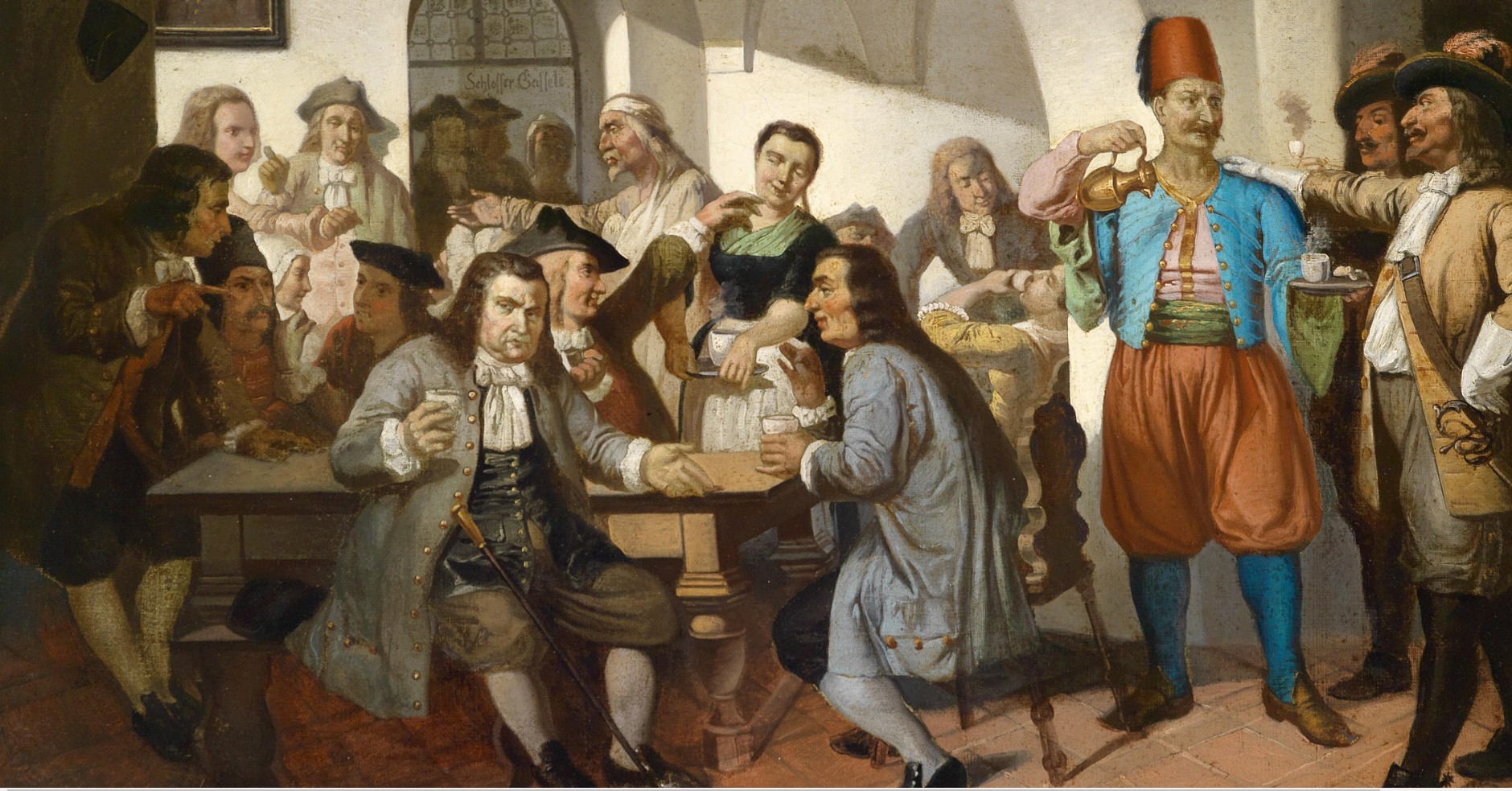
In the bustling modern world, coffeehouses have become ubiquitous establishments where people come together to enjoy a cup of coffee and engage in conversations or work on their laptops. However, not many are aware of the fascinating history behind these social hubs. Coffeehouses have a long and storied past that dates back centuries and spans multiple continents. In this article, we will explore the origins of coffeehouses and how they have played a significant role in shaping history and culture.
The Discovery of Coffee
- The Legend of Kaldi and the Dancing Goats
The history of coffeehouses begins with the discovery of coffee beans in the ancient lands of Ethiopia. According to legend, a goat herder named Kaldi observed his goats frolicking with unusual energy after consuming red berries from a certain shrub. Curiosity led him to taste the berries himself, and he experienced a newfound alertness and vigor. This plant, later identified as the coffee plant, would go on to revolutionize human civilization.
- The Journey from Ethiopia to the Arab World
The knowledge of coffee’s invigorating properties gradually spread from Ethiopia to the Arab world during the 15th century. Arab traders were the first to cultivate coffee plants, and they developed the methods of roasting and brewing coffee, transforming it into the beverage we know today. Coffeehouses, or “qahveh khaneh,” began to emerge in cities like Mecca and Istanbul, becoming popular social spaces for intellectual discussions and debates.
The Rise of Coffeehouses in Europe
The rise of coffeehouses in Europe during the 17th century marked a fascinating cultural shift that had a profound impact on society. It all began with the opening of the first coffeehouse in Oxford, England, in 1650. Known as the “penny university,” it quickly became a gathering place for intellectuals, students, and scholars who would engage in stimulating discussions and debates over a cup of coffee. This model soon spread to London and other European cities, giving birth to a bustling coffeehouse culture.
Coffeehouses in Europe played a pivotal role in shaping the intellectual landscape of the time. They became vibrant hubs of knowledge exchange, fostering an atmosphere of free thought and open discussions. These establishments attracted writers, philosophers, scientists, and artists, who found inspiration in the lively environment. It was within the walls of these coffeehouses that ideas that would later shape the Enlightenment movement were born and nurtured.
Beyond their intellectual significance, coffeehouses also had a profound social impact. Unlike exclusive clubs or gatherings reserved for the elite, coffeehouses welcomed people from all walks of life. This inclusivity democratized access to knowledge and ideas, breaking down social barriers and promoting a sense of community. As a result, coffeehouses became catalysts for creativity and cultural enrichment, leaving a lasting legacy on European society that continues to influence coffee culture and social interaction to this day.
The Social Impact of Coffeehouses
Coffeehouses have played a significant role in shaping society and fostering a sense of community throughout history. These vibrant establishments have had diverse social impacts, transcending geographical boundaries and bringing people from different backgrounds together. Let’s explore the various dimensions of the social impact of coffeehouses in the table below:
| Social Impact | Description | Examples |
| Inclusivity and Democratization of Ideas | Coffeehouses welcomed individuals from all walks of life, offering an inclusive space for discussions and exchanges of ideas. | – Intellectuals, writers, merchants, and laborers mingling in the same coffeehouse.<br> – Intellectual debates open to everyone without social barriers. |
| Catalysts for Enlightenment and Intellectual Discourse | Coffeehouses acted as breeding grounds for the Enlightenment movement, facilitating intellectual discussions and debates. | – Philosophers and scientists sharing ideas that challenged traditional beliefs.<br> – Formation of literary and scientific societies to promote knowledge sharing. |
| Formation of Social Networks and Communities | Coffeehouses became meeting places for like-minded individuals, fostering social networks and a sense of belonging. | – Artists, writers, and musicians gathering regularly, forming artistic communities.<br> – Merchants and traders networking to promote commerce and trade. |
The inclusivity of coffeehouses allowed for the exchange of ideas among people from diverse backgrounds, contributing to the democratization of knowledge. Intellectuals, writers, merchants, and laborers would come together in the same coffeehouse, engaging in discussions without the constraints of social hierarchy. The absence of rigid social barriers encouraged open and free dialogue, making coffeehouses essential spaces for the democratization of ideas.
Moreover, coffeehouses acted as catalysts for the Enlightenment movement, a transformative intellectual period in history. Philosophers and scientists frequented these establishments, sharing ideas that challenged traditional beliefs and encouraged rational thought. The formation of literary and scientific societies within coffeehouses further promoted the dissemination of knowledge and fostered an environment conducive to intellectual growth.
Beyond intellectual discourse, coffeehouses also facilitated the formation of social networks and communities. Artists, writers, and musicians often gathered in coffeehouses, forming creative communities where they could exchange ideas and collaborate on projects. Similarly, merchants and traders used coffeehouses as meeting points to promote commerce and establish business connections.
In summary, the social impact of coffeehouses has been vast and profound. From promoting inclusivity and intellectual discourse to fostering social networks and artistic communities, these vibrant establishments have shaped societies, bringing people together and contributing to the exchange of ideas and culture. Even in the modern world, coffeehouses continue to be beloved social spaces, playing a vital role in the fabric of society.
In conclusion, the origins of coffeehouses can be traced back to the ancient lands of Ethiopia, where the energizing properties of coffee were first discovered. From there, coffeehouses became the breeding grounds of intellectual discourse, creativity, and revolutions. They transcended boundaries, united people, and left a lasting impact on societies worldwide. The culture of coffeehouses continues to thrive today, providing us with not only a warm cup of coffee but also a space where ideas flow freely and shape the course of history.
FAQs
- Q: Which was the first coffeehouse in England? A: The first coffeehouse in England was established in Oxford in 1650.
- Q: Who frequented coffeehouses during the Age of Enlightenment? A: Prominent figures like Voltaire, Rousseau, and Benjamin Franklin frequented coffeehouses during the Age of Enlightenment.
- Q: How did coffeehouses contribute to the American Revolution? A: Coffeehouses, such as the Green Dragon Tavern in Boston, became meeting places for revolutionaries, fostering revolutionary sentiments.
- Q: What role did coffeehouses play during the French Revolution? A: Coffeehouses spread revolutionary ideas and acted as centers for discussions on liberty, equality, and fraternity during the French Revolution.
- Q: How have coffeehouses impacted global cultures? A: Coffeehouses have left an indelible mark on cultures worldwide, acting as spaces for social gatherings, intellectual discussions, and artistic expressions.
